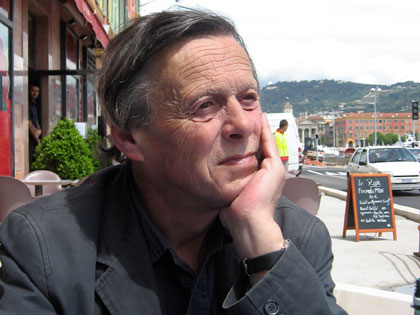Songs are not poems and song lyrics are not lines of verse to be read on a page. That should be self-evident, and thus when the Nobel committee announced that its 2016 prize for literature was to be awarded to Bob Dylan, lovers of both poetry and music were bemused. Yes, he probably deserved a Nobel prize for songwriting (though none exists), but for literature? Surely not.
Still, the notion of song lyrics being commensurate with poetry has a longish history. Back in the late 1960s, after the emergence of Dylan as a major songwriter, an American journalist called Richard Goldstein compiled and editited The Poetry of Rock, which became an immediate paperback bestseller and ended up being taught in literature courses by earnest academics who were eager to connect with a new generation of hip young students.
This was also the decade when the Keats v Dylan debate first emerged, with distinguished literary scholar Christopher Ricks – who had written an admired book on Keats but who had recently fallen under Dylan’s spell – making ardent, not to mention extravagant, claims for the latter.
Indeed, I recall inviting him to argue Dylan’s poetic case at a UCD literary society evening in Earlsfort Terrace, where he was introduced to a packed crowd of undergraduates by that most patrician of academic eminences, the late Denis Donoghue, who seemed somewhat discomfited, if not downright pained, by his illustrious guest’s choice of subject.
Decades later, Ricks went on to write Dylan’s Visions of Sin (2003), one of the dafter books ever penned about the man from Minnesota – and there have been many. This wasn’t just because, in analysing Dylan’s supposed “themes”, he became one of those “learned commentators” who, as Swift had it, “view in Homer more than Homer knew”. It was also that, by focusing entirely on Dylan’s lyrics and ignoring all those other elements that make the songs unique, he missed the point entirely.
How, for instance, can you appreciate the visceral impact of ‘Like a Rolling Stone’ without its propulsive melody, without the singer’s raucous voice and snarling delivery, without the kick of the snare drum or the yowlings of Al Kooper’s electric organ – indeed, without the particular sonic qualities of the New York studio in which it was recorded? Well, Ricks managed to do so and, in the process, managed to reduce Dylan’s achievement to lines of disembodied words on a page.
Not that the words have ever been secondary with Dylan, as the torrent of gleefully withering invective in ‘Like a Rolling Stone’ itself demonstrates. And, of course, he had begun as a folksinger, adhering to a tradition in which storytelling was a crucial component in the impact a singer could have on his audience.
From that tradition came many of his early successes, stark folk narratives with a moral, such as Ballad of Hollis Brown or The Lonesome Death of Hattie Carroll, along with rallying-cry anthems such as Blowin’ in the Wind and The Times They are A-Changin’.
You’ll find the words to these and hundreds of other songs in the 600-page Bob Dylan Lyrics 1962-2001, published by Simon & Schuster in 2004. It’s an astonishing achievement and if the book were to be updated to 2021, it would be even more astonishing – encompassing the lyrics to his 2020 album, Rough and Rowdy Ways, recorded when he was 79 and running to more than 800 pages.
That album features the song I Contain Multitudes, which is crammed with wry and funny cultural references from down the decades, but then Dylan has always contained multitudes, moving restlessly in the ’60s from folk to rock, culminating in the “wild mercury sound” (his own description) of Blonde on Blonde, made in Nashville in 1966, which features metaphor-laden hallucinatory lyrics to match the dense musical texture – nowhere more potently than in Visions of Johanna (“The ghost of electricity howls in the bones of her face”), Stuck Inside of Mobile and Sad eyed Lady of the Lowlands.
This milestone of a double-LP was soon followed by John Wesley Harding, with lyrics so stripped back as to be gauntly puritan, indeed biblical, in their thrust. (Just listen again to ‘All Along the Watchtower’). And that was immediately followed by Nashville Skyline, with lyrics as homespun and simple as the country-tinged ambience of its music.
In that decade, if the Beatles had most of the best tunes, Dylan unquestionably had the best lyrics (pace Leonard Cohen): lyrics that spoke to a generation as unsettled and restless and questioning as the singer clearly was himself.
It was his greatest decade, with nine extraordinary albums in eight years. Afterwards it all got a bit patchy, with nothing much of note between Blood on the Tracks in 1975 and Time Out of Mind in 1997, though some of the other stuff has its fiercely partisan defenders.
But Dylan has never gone away and in the last two decades there’s been an extraordinary late flowering, from Love and Theft in 2001 and Modern Times in 2006 to Rough and Rowdy Ways less than a year ago. Yes, he still contains multitudes.
